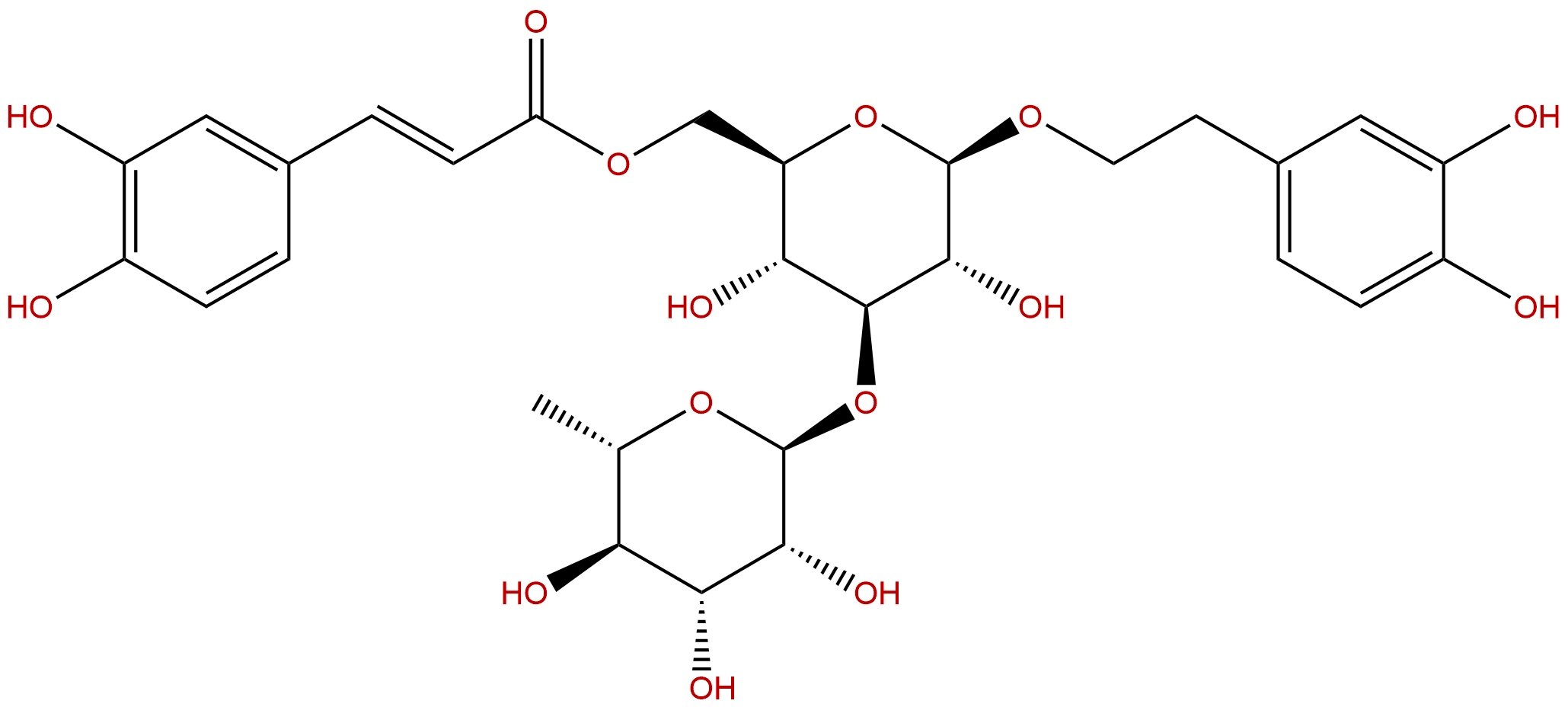Isoacteoside Descrtption
Product name: Isoacteoside
Synonym name: Isoverbascoside
Catalogue No.: BP0770
Cas No.: 61303-13-7
Formula: C29H36O15
Mol Weight: 624.592
Botanical Source: numerous plant spp., e.g. Castilleja linariaefolia , Rehmannia glutinosa , Plantago lanceolata
Physical Description: Powder
Type of Compound: Phenylpropanoids
Purity: 95%~99%
Analysis Method: HPLC-DAD or/and HPLC-ELSD
Identification Method: Mass, NMR
Packing: Brown vial or HDPE plastic bottle
Storage: Store in a well closed container, protected from air and light. Put into refrigerate or freeze for long term storage.
Whenever possible, you should prepare and use solutions on the same day. However, if you need to make up stock solutions in advance, we recommend that you store the solution as aliquots in tightly sealed vials at -20℃. Generally, these will be useable for up to two weeks.
The product could be supplied from milligrams to grams, up to kilograms
Inquire for bulk scale.
Descriptions:
Isoacteoside, isolated from Clerodendron trichotomum (Verbenaceae), has antioxidant properties, can scavenge intracellular reactive oxygen species (ROS) and 1,1-diphenyl-
2-picrylhydrazyl (DPPH) radical, prevent lipid peroxidation, and reduce the apoptotic cells formation induced by H2O2.[1]
Isoacteoside has inhibitory activities against protein glycation in vitro may apply to cell models at higher glucose concentrations or to diabetic animal models.[2]
Isoacteoside has anti-inflammatory activity, can significantly suppress the production and mRNA expression of proinflammatory cytokines including IL-1β, IL-6, IL-8 and TNF-α in PMACI-stimulated HMC-1 cells without cytotoxicity. [3]
Isoacteoside and echinacoside stimulate the increase of α7 and α3 proteins in the cultured cells, attenuate the decreased expression of α3 and α7 nAChR subunit proteins and cell viability on SH-SY5Y cells induced by Aβ, they may play neuroprotective role by stimulating nAChR expression, which might be important in a therapeutic strategy to AD.[4]
References:
[1] Chae S, Kim J S, Kang K A, et al. J Toxicol Env Heal A, 2005, 68(5):389-400.
[2] Liu Y H, Lu Y L, Han C H, et al. Bot Stud, 2013, 54(1):1-9.
[3] Nam S Y, Kim H Y, Yoou M S, et al. Immunopharm Immunot, 2015, 37(3):1-7.
[4] Xiao-Lan Q I, Xiao H T, Xiao Y, et al. Lishizhen Medicine & Materia Medica Research, 2011, 22(7):1561-3.
[5] M X Li, Wei L L, Tao R, et al. Chinese Pharmacy, 2014 (11):1027-9.


